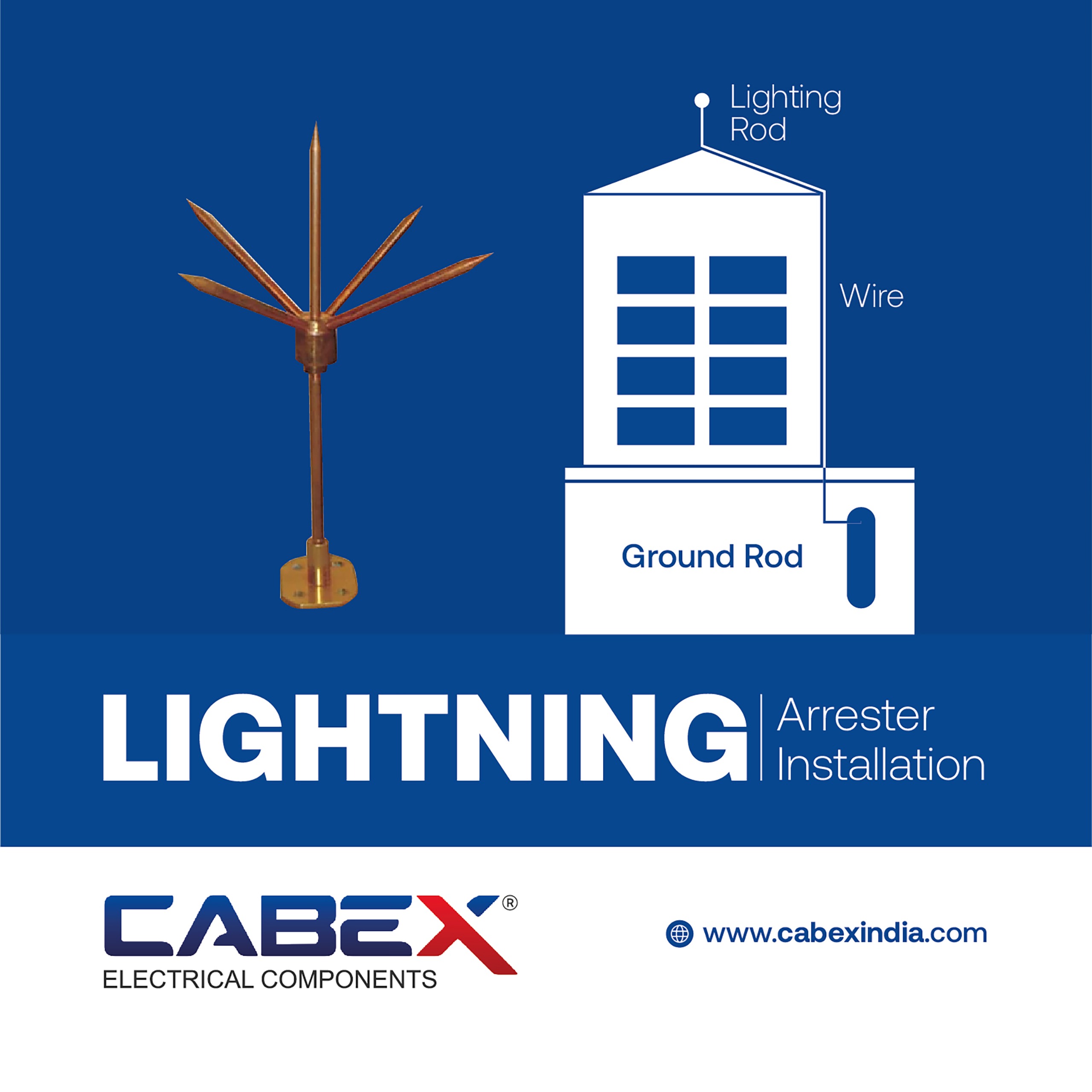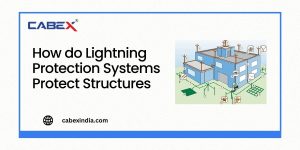Introduction
With the modern house now filled with high-priced electronics and appliances, the need to protect these items from the whims of lightning has become much more critical. No doubt, a lightning arrester installation would considerably reduce the risks associated with this form of natural disaster.
Installing a lightening arrestor and avoiding mistakes in your house is, therefore, very imperative in protecting your property and saving your dear ones from the ravages of lightening attacks. Lightening is such a powerful force of nature to cause fires, damage electrical appliances, and risk life. The function of a lightening arrester, also commonly referred to as surge arrester, is to divert the excess voltage from a lightening strike safely into the ground, thus protecting the electrical system of your home.
How do lightning arresters work?
The working principle behind the arresters is simple but effective. Basically, they consist of a metal rod or conductor that extends from the highest point of your home—in this case, the roof. During a strike, the arrester intercepts the electrical surge and provides the path of least resistance for the current to travel safely into the ground without entering the home’s wiring and appliances, hence avoiding fire and electrical damage.
Benefits of Installing a Lightning Arrester
1. Protection Against Electrical Surges
Of course, the primary advantage of a lightning arrester is that these devices give users protection from electrical surges caused by lightning strikes. Such big surges may cause the frying of sensitive electronics or failure in an HVAC, resulting in very costly repairs. With the installation of a lightning arrester, you will significantly reduce these risks and ensure the longevity of electric-based appliances at home.
2. Improved Safety of the Occupants
Besides property protection, a lightning arrester improves the safety of all in your household. Electrical currents potentially travel along plumbing and wiring at the point of a lightning strike, thereby delivering a shock or fire. With an arrester in place, these risks are greatly reduced—thus bringing peace of mind during thunderstorms.
3. Building Code Compliance
This design forms the basis of most building codes, with many jurisdictions insisting that homes come equipped with lightning arresters, particularly in regions prone to lightning. In addition to saving your home, this avoids legal liabilities that could come up should damage result from a lightning strike.
Types of Arrestors
There exist several types of lightning arresters available today, each for different requirements and applications, such as:
1. Rod-Based Arresters
Probably the most common of these is the rod-based arrester: a metal rod placed at the very highest point in the structure. Rod-based arresters work well for residential homes and are pretty easily installed.
2. Cable and Mesh Lightning Arresters
Ideal for larger structures or buildings with complex roof designs, cable and mesh arresters distribute the electrical surge across a broader area, reducing therefore the risk of damage.
3. Surge Protective Devices
Conversely, SPDs are installed either at the electrical panel or at individual outlets within a home. They protect not only against direct strikes but also against other electrical surges, including those caused by power grid fluctuations.
Installation Process of a Lightning Arrester
Step 1: Assessment and Planning
Assess the structural nature of your home and determine where you should situate it. This is usually a point that accounts for the greatest height to ensure that the interceptor can easily intercept any lightning strike.
Step 2: Preparing Materials
Gather all the materials needed, including a lightning arrester, grounding rods, cables, and equipment needed during the installation process. The equipments should be in line with the building codes within your locality and safety periphery.
Step 3: Installation
- Mounting of the Arrester: Fasten the lightning arrester to a dedicated point with a firm fastening and at an elevation above the roof line.
- Link to Ground: Make a clear path to ground from the arrester to grounding rods buried at a depth where the earth is usually moistened for excellent conductivity.
- Wiring and Testing: Wire the arrester into your home’s electrical system. It should be done according to the manufacturer’s instructions. Test the system to make sure it has been installed and working well.
Step 4: Routine Maintenance
Occasionally, inspect the area around a lightning arrester for damages or corrosion and replace worn parts to ensure that your gadget does work effectively. After an ultra-visual test on your equipment, conduct all electrical tests recommended by the manufacturer for its readiness.
Types and Categories
Types of Lightning Arresters
Lightning arresters vary in forms: rods, cables, and even highly advanced systems such as Early Streamer Emission devices. Each has its distinct advantages depending on the structure and your home’s location.
The Installation Process
Assessing Vulnerability of Your Home
First, assess your home’s vulnerability to lightning strikes. A large component of this is geographical location, along with the structure of your building.
Selecting the Appropriate Lightning Arrester
Consult a professional electrician who will look at the risk and your budget to advise on the best for your house.
Professional Installation Services
Ensure proper installation by hiring someone with experience and who understands the laws and safety regulations within your county or state.
Components of a Lightning Arrester
Rods and Conductors
Lightning arresters share the same core working components: rods, conductors and grounding system all working in unison to divert electrical currents from a lightening strike safely to the ground.
Grounding System
An efficient earthing system relies on the effective dissipation of electrical energy that has been captured by the lightning arrester.
Surge Protection Devices (SPDs)
Built-in surge protective devices protect electronic equipment and appliances from electrical surges during a strike.
Benefits of Installing a Lightning Arrester
Protection of Property and Appliances
The lightning arrester safeguards expensive property damage and sensitive electronic equipment by diverting the lightning strike away from the structure.
Personal Safety
A lightning arrester installation not only saves your valuables but also enhances personal safety with reduced risks of electrical hazards due to storms.
Some Common Misconceptions
Myths about Lightning Arresters
Address general misconceptions, such as the one that says that light does not strike the same place twice, and correctly identify what a lightning arrester does to rid one of such misconceptions.
Addressing Safety Issues
Reassure the residential customer of the absolute safety and reliability of the modern lightning arrester, easing any fear of electrical interference or malfunction.
Inspection and Maintenance
Periodic Inspection
Lightning arresters should be periodically inspected and maintained in order to make sure that they will always be at their best working condition to protect your home.
Replace Worn-out Parts
Replace worn-out components in good timing to ensure that your protection system against lightning remains very effective over the years.
Cost Considerations
Installation Costs
Express the amount of capital upfront invested in installing a lightning arrester and specify possible long-term savings against repair costs due to lightening damage.
Long-term Savings
Bring out the long-term direct insurance premium reduction and lesser number of repairs needed after installation of a lightning arrester
Environmental Impact
Eco-friendly Lightening Protection Options
Bring to the fore the eco-friendly lightening protection solutions that offer environmentally low impact without compromising safety.
Sustainable installation practices
Promote green concepts in lightning arrester installations, including the use of recyclable materials and reducing carbon footprints.
Codes and Standards of Safety Regulations
Compliance Requirements
Point out the regulatory standards and safety codes that are to be followed during the installation and maintenance of the lightning arresters so that these installations may remain compliant.
Certifications and Testing
Specify the requirement of choosing lightning arresters that carry the certification of recognized safety organizations with periodic testing.
Insurance Considerations
Impact on Homeowner’s Insurance
Explain how the lightning arrester installation may enhance an owner’s insurance policy rate structure since the risk of having a claim due to a lightning strike will be reduced.
Lightning Damage Coverage
Review your insurance coverage regarding damage caused by a lightning strike and how a lightning arrestor enhances it and mitigates risks.
Case Studies
Real-Life Examples of Lightning Damage
Present real-life scenarios of how lightning strikes caused devastating damage to uninstalled houses, versus the efficiency of the lightning arresters in preventing damages.
Success Stories with Lightning Arresters
Share success stories those concerned house owners do get who installed the lightning arresters to have that added protection and peace of mind.
Expert Insight
Recommendations from Electrical Engineers
Offer some electrical engineers’ tips on the different state-of-the-art protection devices against lightning, taking into consideration various configurations of houses and geographical locations.
Safety Professional Advice
Provide tips from safety professionals to ensure the general safety and effectiveness of the lightning arresters with respect to proper installation and maintenance procedures.
Conclusion
Installation of a lightning arrester is, therefore, a step toward protecting one’s house, belongings, and loved ones against the unidentified forces of nature. The house owners, by understanding what a lightning arrester is, its types, process of installation, benefits, and maintenance, are better placed in making decisions concerning safety and mitigation of risks.
This, therefore means that a lightning arrester would be an efficient way to protect your home, possessions, and family members against such devastating attacks. Why? Because, based on the different types, benefits, and process of installing this gadget, one would be better placed at making informed decisions toward safeguarding your property in tandem with legal pronouncements in respect of safety regulations.





